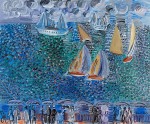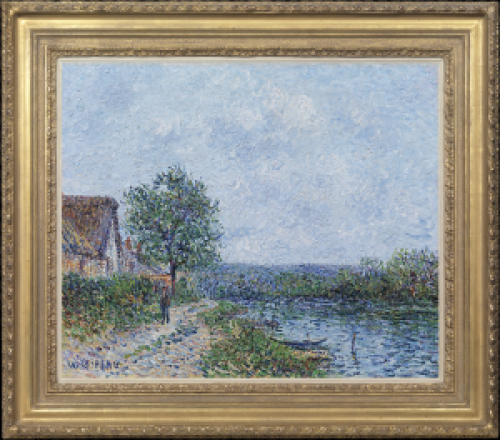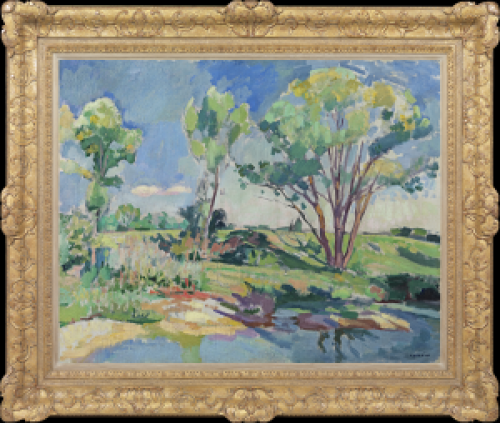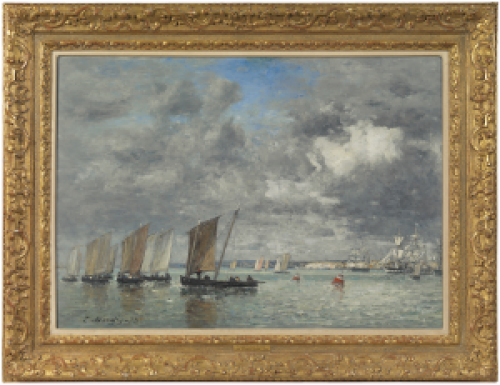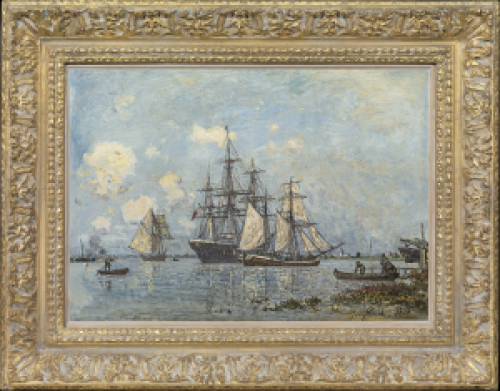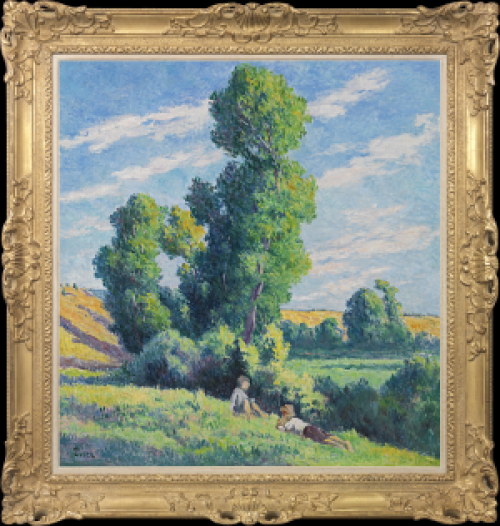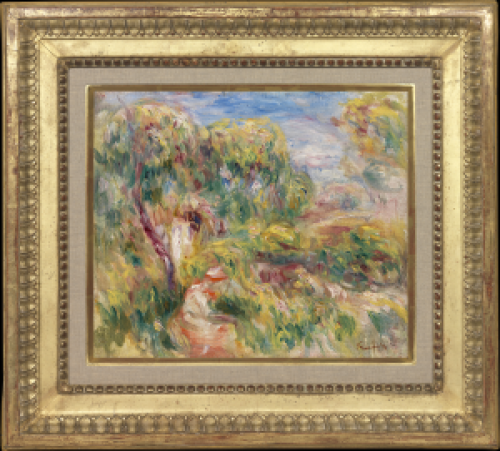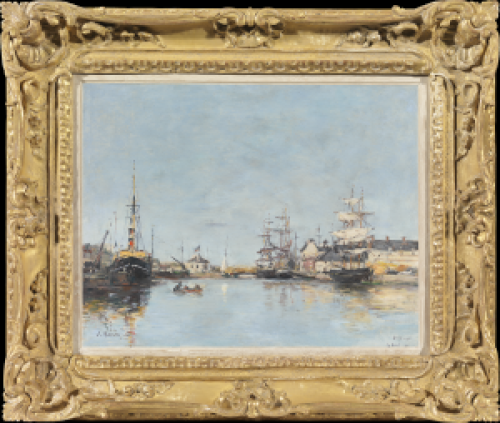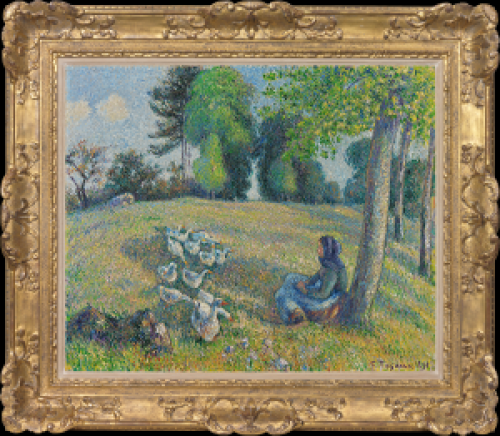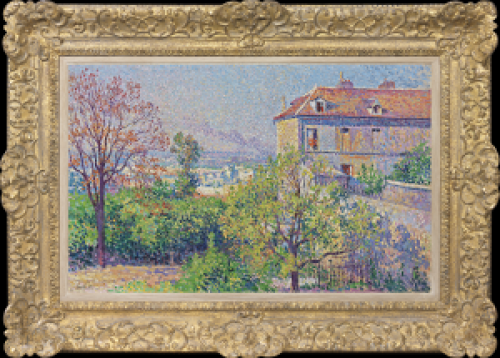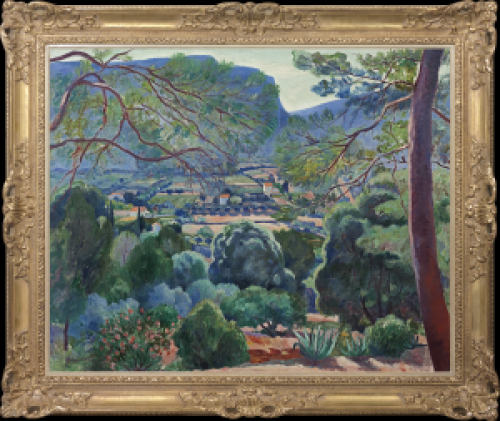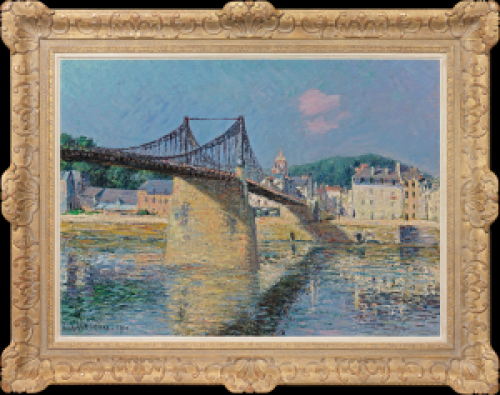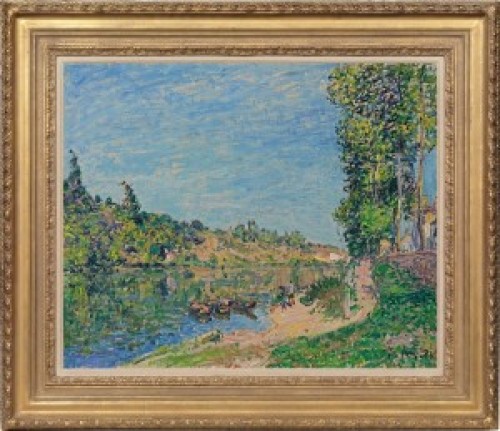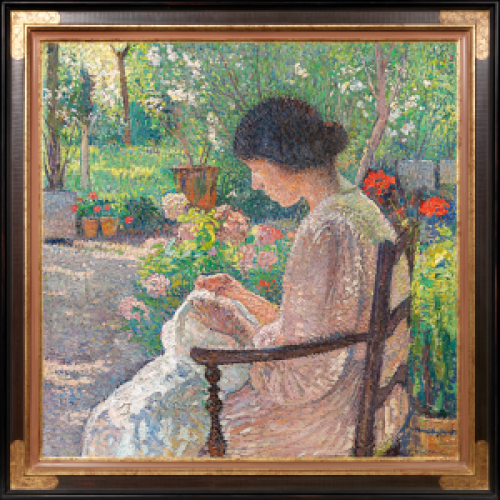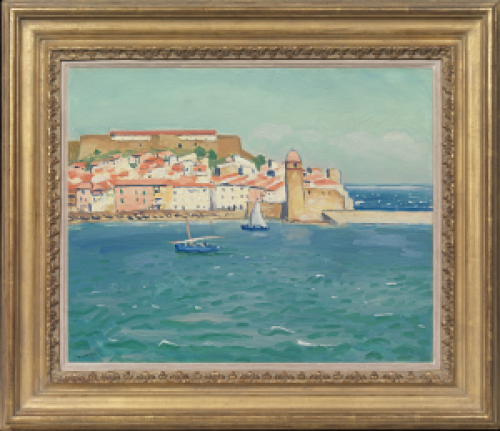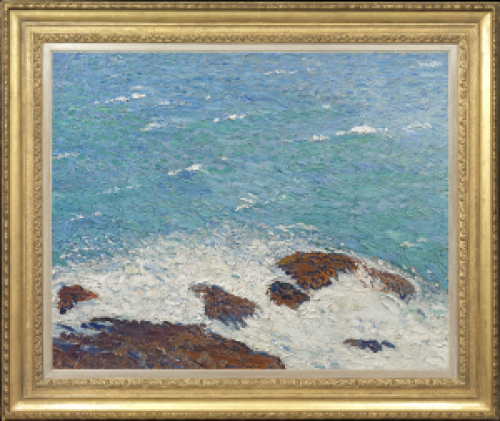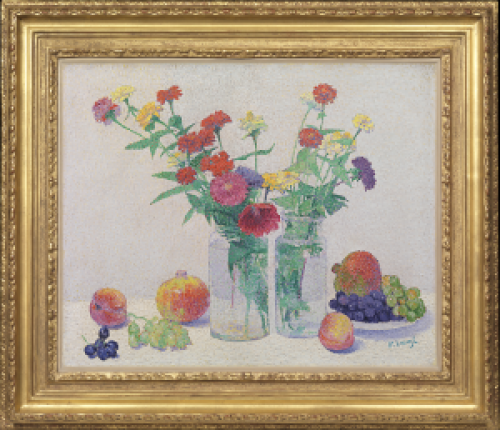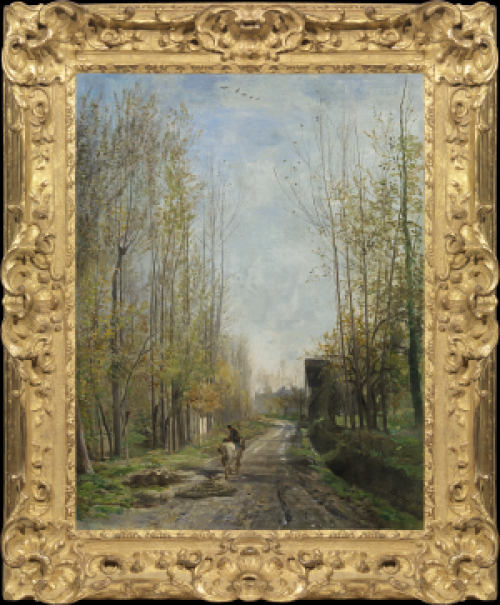RAOUL DUFY
Le Havre 1877 - 1953 Forcalquier
Ref: CD 130
La promenade au bord de la mer, Sainte-Adresse
Signed lower right: Raoul Dufy
Oil on canvas: 23 ¾ x 28 ¾ in / 60.3 x 73 cm
Painted circa 1924
CD 130
RAOUL DUFY
Le Havre 1877 - 1953 Forqalquier
La promenade au bord de la mer, Sainte-Adresse
Signed lower right: Raoul Dufy
Oil on canvas: 23 5/8 x 28 ¾ in / 60 x 73 cm
Frame size:
Painted circa 1924
Provenance:
René Patris d’Uckermann (1897-1993), Paris
Marie-Françoise Robert, Paris, 28th November 2005, lot 37;
Richard Green, 2005;
private collection, Europe;
Christie’s London, 5th February 2014, lot 431;
where acquired by a private collector, Europe
Literature:
Maurice Laffaille, Raoul Dufy, Catalogue Raisonné de l’Oeuvre Peint, Geneva 1973, vol 2, no.707, illus.
Like Claude Monet, Raoul Dufy grew up in Le Havre: the sea and the colour blue suffused his work. He commented: ‘Unhappy the man who lives in a climate far from the sea, or unfed by the sparkling waters of a river! … The painter constantly needs to be able to see a certain quality of light, a flickering, an airy palpitation bathing what he sees’[1].
Dufy was stunned by the appearance of the Fauve painters at the Salon des Indépendents in 1905, grasping that colour could float free from the shackles of naturalism. He wrote that in those years ‘I was spontaneously led towards what was to become my real preoccupation. I had discovered a system, whose theory was this: to follow the light of the sun is a waste of time. Light in painting is something completely different: it is a light distributed throughout the composition, a ‘couleur-lumière’’[2].
By the 1920s, when La promenade au bord de la mer, Sainte-Adresse was made, Dufy was effortlessly in command of the power of couleur-lumière, filling the canvas with a symphony of blue which is as sparkling and shifting as the sea and the light by which he was mesmerised in his Le Havre boyhood. As he explained, ‘Blue is the only colour which keeps its own individuality across the spectrum. Take blue with its different nuances, from the darkest to the lightest; it will always be blue, whereas yellow darkens in shadow and fades out in lighter parts, dark red becomes brown and when diluted with white, it isn’t red any more but another colour: pink[3]. Blue dominates the three bands of this composition: the figures on the quay, the expanse of sea and the cloud-flecked Normandy sky. Perspective is all but abandoned, so that the three planes deliciously slide one into the other.
Saint-Adresse, a couple of miles north-west of Le Havre, was the subject of one of Monet’s earliest paintings depicting bourgeois leisure on the Normandy coast, his celebrated Garden at Saint-Adresse, 1867 (Metropolitan Museum of Art, New York). Dufy updates this carefree life for the Jazz Age. The foreground of the painting is occupied by a band of promenaders under rhythmic, scalloped awnings. In a few flicks and dribbles of luscious paint, Dufy conjures up fashionable women twirling their parasols, smart, besuited gentlemen, a pair of yachting types and a nursemaid with a pram, all in a palette of black, blue and white. The calligraphic dexterity and the observation of clothing and silhouette in these figures is a reminder of Dufy’s talents as a textile designer and scenographer: he provided the stage designs for the Milhaud/Cocteau ballet Le Boeuf sur le Toit in 1920.
On the sea, described with a series of circles shading from sapphire to turquoise to midnight blue to black, float yachts painted with a childlike directness and simplicity, beneath the scudding clouds of a Normandy sky. As France emerged from the dark years of the First World War and a new energy and optimism overtook the arts, Dufy’s painting expresses elegant joie de vivre.
This painting was formerly owned by René Patris d’Uckermann (1897-1993), the heir of the painter Ernest Hébert (1817-1908), who devoted his life to arts and letters. D’Uckermann was Literary Director of Editions Flammarion. He donated Hébert’s studio at 11 Rue de Navarin in Paris to be used as the headquarters of the Conseil International de la Langue Française, a body which seeks to preserve the purity of the French language throughout the Francophone world.
RAOUL DUFY
Le Havre 1877 - 1953 Forqalquier
Raoul Dufy was born in Le Havre, the son of an accountant who was also a fine musician, an interest which Raoul inherited. Family financial difficulties forced him to leave school at fourteen and work as a bookkeeper for a Brazilian coffee importer. He pursued his passion for art with evening classes at the Ecole des Beaux-Arts in Le Havre, taught by Charles Lhullier, and constantly visited the museums. He formed a close friendship with another young artist, Othon Friesz; both men were influenced by Eugène Boudin and Jean-Baptiste-Camille Corot.
In 1900 Dufy joined Friesz in Paris, studying at the Ecole des Beaux-Arts in the studio of Léon Bonnat and encountering the work of Claude Lorrain and the Impressionists. In 1902, the painter Maurice Delcourt introduced Dufy to Berthe Weil, who had a studio in rue Victor Massé. Here she organised exhibitions of avant-garde artists such as Albert Marquet and Henri Matisse. The presence of the Fauve painters at the 1905 Salon des Indépendents proved a revelation. Dufy was particularly impressed by Matisse’s Luxe, calme et volupté, adopting the Fauves’ glowing colours and sweeping brushstrokes in works such as Rue pavoisée, 1906 (Pompidou, Paris).
A visit to Munich in 1909 exposed Dufy to the work of the German Expressionists and the possibilities of wood engraving. The following year he made woodcuts to illustrate Guillaume Apollinaire’s Bestiaire ou cortège d’Orphée and in 1911 established with the fashion designer Paul Poiret La Petite Usine, a cloth-printing workshop in which Dufy produced watercolour designs for Bianchini-Férier textiles.
From the early 1920s Dufy developed his characteristic style, in which free, dynamic drawing is coupled with an arbitrary use of colour independent of line, creating a tremendous sense of joie de vivre. Slavish truth to nature was less important than evoking a ‘shorthand of the essential’ through a poetic universe of emblems. Favourite themes included regattas and seaside views bustling with people, and horse-racing. Dufy travelled in Italy, Morocco and southern France in the 1920s; in the 1930s he often stayed in England, where his work was highly regarded.
Dufy’s first stage design was for the celebrated Le Boeuf sur le Toit (1920), with words by Jean Cocteau and music by Darius Milhaud. He produced designs for ceramics, tapestry cartoons and architectural decorations, notably the 600 sq. metre Electricity fairy (Musée d’Art Moderne de la Ville de Paris), made for the 1937 Exposition Internationale des Arts et Techniques dans la Vie Moderne. Passionate about music, from 1942 Dufy made a series of orchestra paintings. Towards the end of his life he abandoned colour contrasts in favour of almost monochrome tonal painting in such works as Yellow console of the violin, 1949 (Art Gallery of Ontario, Toronto). Raoul Dufy died in Forcalquier, Basses-Alpes, on 23rd March 1953.
The work of Raoul Dufy is represented in the Musée d’Orsay, Paris; the Musée d’Art Moderne de la Ville de Paris; the Musée des Beaux-Arts, Nice; the Hermitage, St Petersburg; Tate Modern, London; the Royal Collection, London; the Metropolitan Museum of Art, New York; the Art Institute of Chicago and the Art Gallery of Ontario, Toronto.
[1] Quoted in Dora Perez-Tibi, Dufy, London 1989, p.158.
[2] Quoted in Perez-Tibi, op. cit., p.24.
[3] Dufy quoted in Pierre Courthion, Raoul Dufy, Geneva 1951, p.52.




